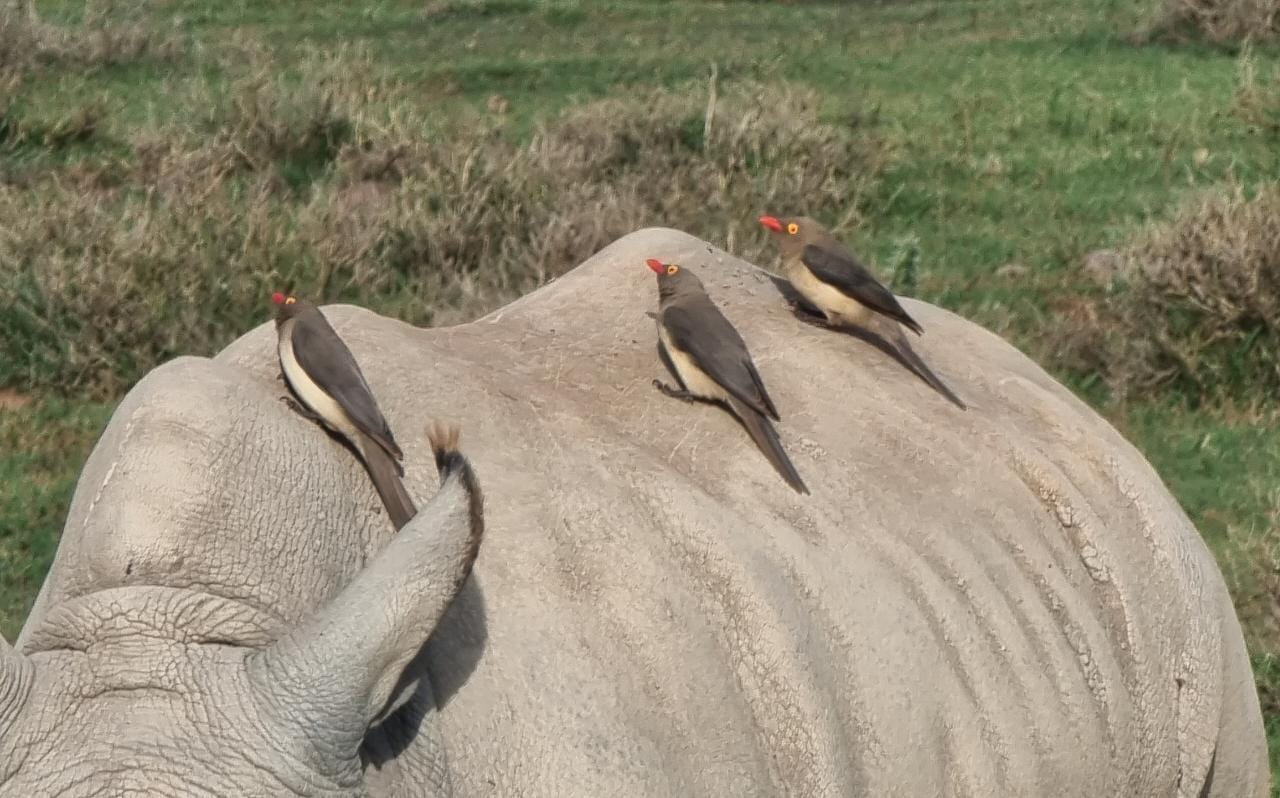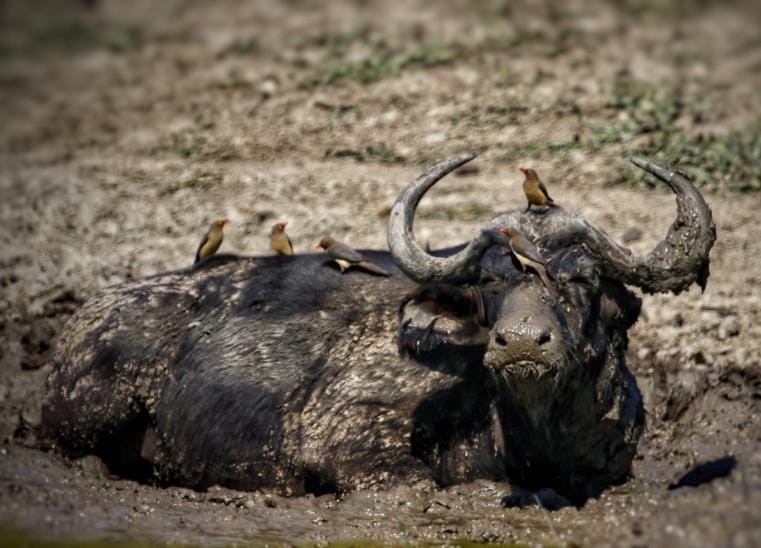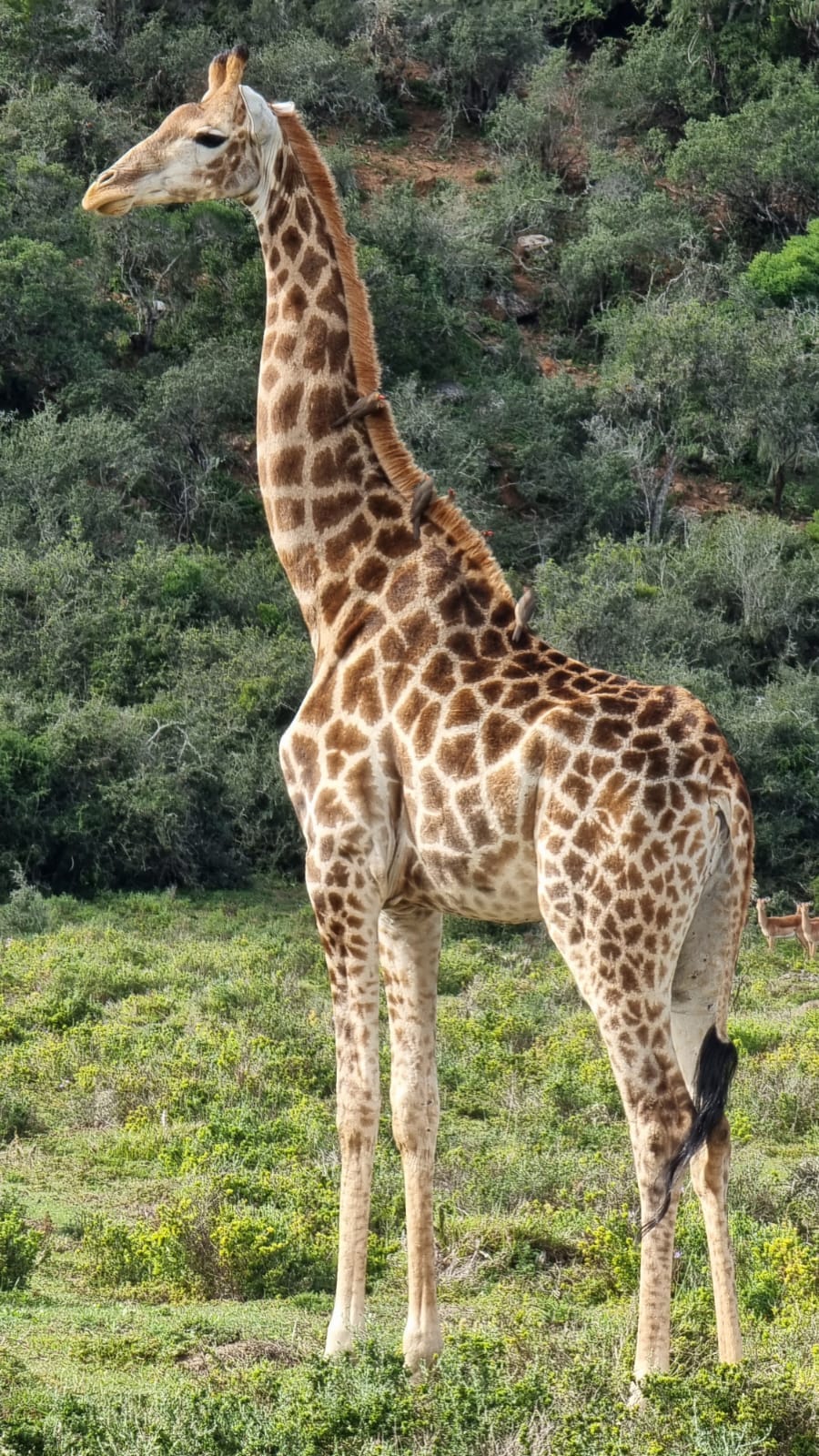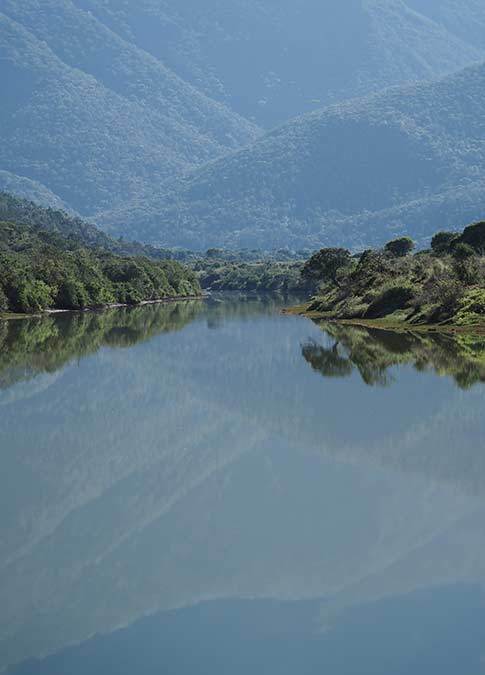Red-Billed Oxpecker | A Conservation Success Story

The Eastern Cape is the second largest of South Africa’s nine provinces and incorporates five ecological zones – ranging from lush evergreen forest to rugged mountain and dry savannah grasslands.
In the 19th century most land in the Eastern Cape was used for stock farming, which had a devastating effect on the wildlife endemic to the area. In order to protect livestock and keep food on the table, hunting practices became wide-spread as well as livestock dipping for pesticide control, particularly against ticks.
Needless to say many indigenous animals became greatly endangered and in some cases, close to extinction. Most wildlife was completely wiped out from the Eastern Cape.
One of the species that suffered was the Red-Billed Oxpecker. A beautiful bulbul-sized olive-brown bird with an all-red bill and a red eye surrounded by a fleshy yellow wattle.
Today, the Eastern Cape is the fastest growing nature and conservation area in South Africa, pioneered by Kariega Game Reserve, two major national parks and a handful of privately owned private game reserves that form part of the Indalo Protected Environment.
For the first thirty years of Kariega's wildlife history, when a number of endemic species were reintroduced, staff and guests visiting Kariega Game Reserve rarely saw a Red-Billed Oxpecker. As our wilderness matured and herds of plains game, giraffe, rhino and buffalo grew, sightings of this little bird increased; slowly at first, but today the reserve boasts prolific flocks of Red-Billed Oxpeckers!
A conservation success story of which we feel very proud!

The Demise of the Red-Billed Oxpecker
The Red-Billed Oxpecker (Buphagus erythrorhynchus) are African Passerines from the Starling lineage. The oxpeckers are endemic to the Sub-Saharan Africa, where they occur in most open habitats. The distribution of the oxpecker is restricted by the presence of their preferred prey, specific species of ticks and the host of the ticks. They feed on ectoparasites, particular ticks and insects infesting wounds on animals as well as the flesh and blood from the wounds.
As early as the 1900’s, the Red-Billed Oxpecker had seen a huge decline in numbers and was classified as locally extinct in the Eastern Cape. It is believed to be the result of the dwindling number of their preferred host being the rhino and buffalo. This resulted in the oxpeckers moving to farming grounds where the birds were using local livestock as their host species.
The dips used to dip the livestock contained a fatal chemical ‘arsenic trioxide’ which had a devastating effect on the oxpecker population. Oxpeckers feeding on the dipped cattle soon fell prey to their now poisonous ticks and died within 48 hours after feeding.

Conservation Efforts Revive Red Billed Oxpecker Populations
There have been focused conservation efforts from the 1980’s onwards to re-establish populations of Reb-Billed Oxpeckers in the Eastern Cape. A number of birds taken from the Kruger National Park were reintroduce to areas in the Eastern Cape which have been rewilded from livestock farms back to privately owned game reserves, including a number of reserves belonging to the Indalo Protected Environment.
Initially 83 birds were translocated with several more flocks that followed over the years.
The growing number of Game Reserves with land under protection; healthy inclining numbers of host species like buffalo, rhino, giraffe and eland as well as the absence of toxic dips since the reintroduction programme began, have all been contributing factors to the resounding success of this collective conservation project and the resultant growing numbers of this vitally important small bird.
Now, guests, Field Guides and staff alike at Kariega Game Reserve are loving prolific sightings of the Red-Billed Oxpecker. They are a reminder of the purpose and privilege of the work that we do in conserving the biodiversity on our planet and sharing it with people from all around the globe.
Did you see a Red-Billed Oxpecker on your Kariega safari? Tell us all about it and share your memories or photos with us on Facebook or Instagram!
Photo credits: Kariega Head Guide, Wayne Howarth.










